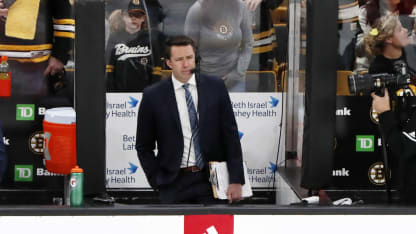The expansion of the NHL to nontraditional markets such as Phoenix, Nashville, Florida, Las Vegas and Seattle, where the 32nd NHL franchise is scheduled to begin play in 2021-22, will help hockey reach greater heights in the United States. The advent of the NTDP is one reason that a number of homegrown players are enjoying success. Seven of the first 15 players chosen in the 2019 NHL Draft skated for the NTDP, including No. 1 pick Jack Hughes, taken by the New Jersey Devils.
"I think in places where we had some untapped talent pools, we're starting to tap into those talent pools," Boucher said. "It's not uncommon to see a kid from the (Washington) D.C. area playing at a high level or a kid from Florida, California … my son (forward Tyler Boucher) is on the [NTDP] and several kids from California are on that team. There's a lot of kids from southern areas that are now making their way up the ranks. It's pretty cool to see -- and much, much different than from when I was a kid."
Hockey in the United States is immeasurably different compared with early 1980, when a group of U.S. amateur players given little to no chance of accomplishing anything at the 1980 Lake Placid Olympics defeated the Soviet Union 4-3 on Feb. 22, a game forever known as "Miracle on Ice." Two days later, the United States won the gold medal and created more interest domestically with a 4-2 win against Finland.
Youth hockey participation climbed from 146,860 in 1979-80 to 214,116 in 1989-90, according to USA Hockey. By 1997-98, the number of boys and girls exceeded 400,000 (401,218) and has continued to escalate. A total of 567,908 (485,100 boys, 82,808 girls) played youth hockey in 2018-19; membership numbers for 2019-20 will be available in late May.
"From a USA Hockey level, the numbers keep going up year after year, whether it be in boys, girls or even sled hockey," Boucher said. "If the whole country is watching what happened in the Winter Olympics in 1980, I'm sure there was some kids that were in some nontraditional hockey markets inspired by what took place and probably asking their parents, 'Hey, can I try hockey?'
"At that point, that's when people started to recognize that maybe hockey is a game that's one of interest. For people in certain areas of the country, they never were exposed to it. Maybe that would have been their first real exposure to the game. To have success on an international stage like that, what better way to pique the interest."

